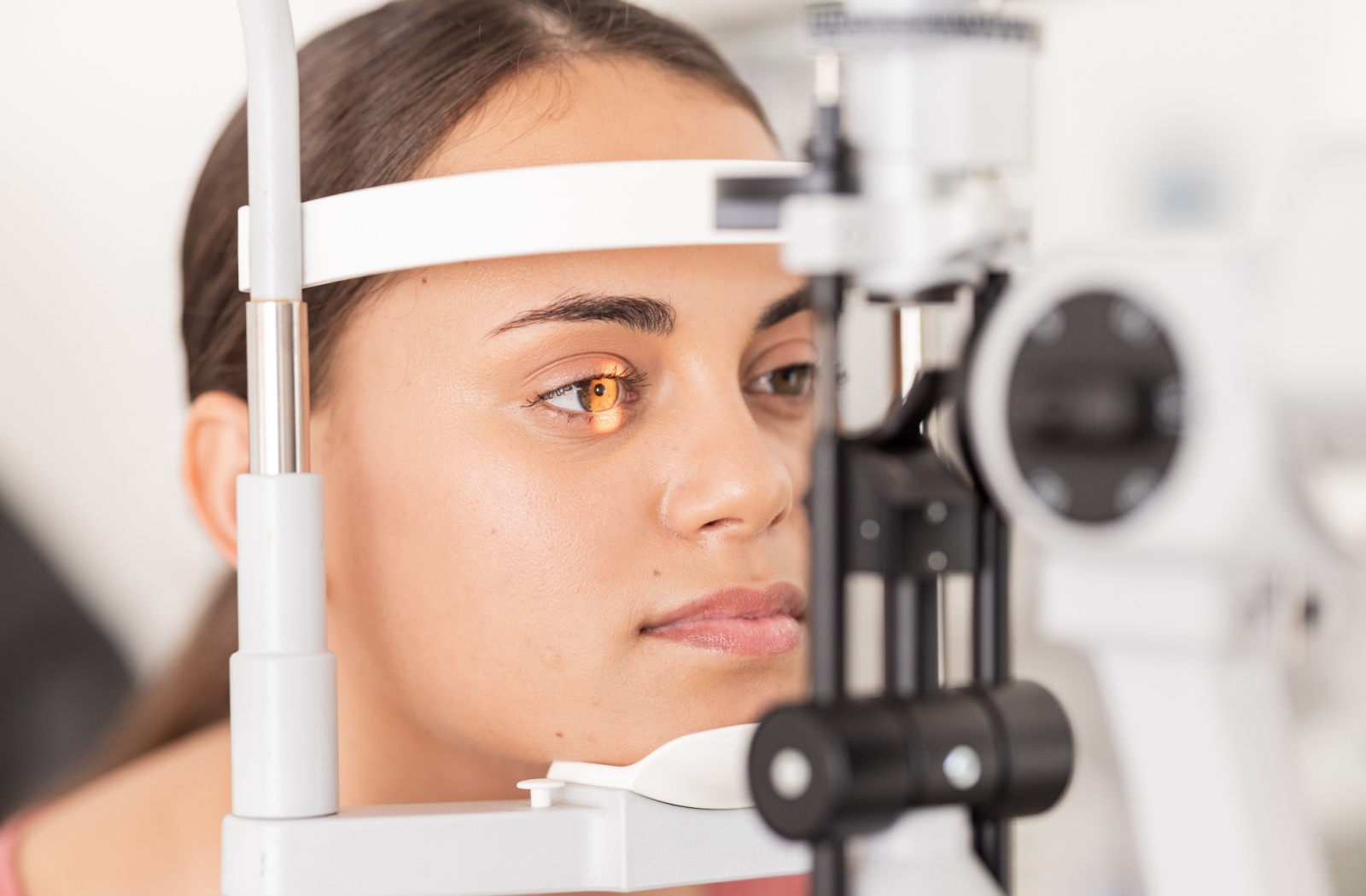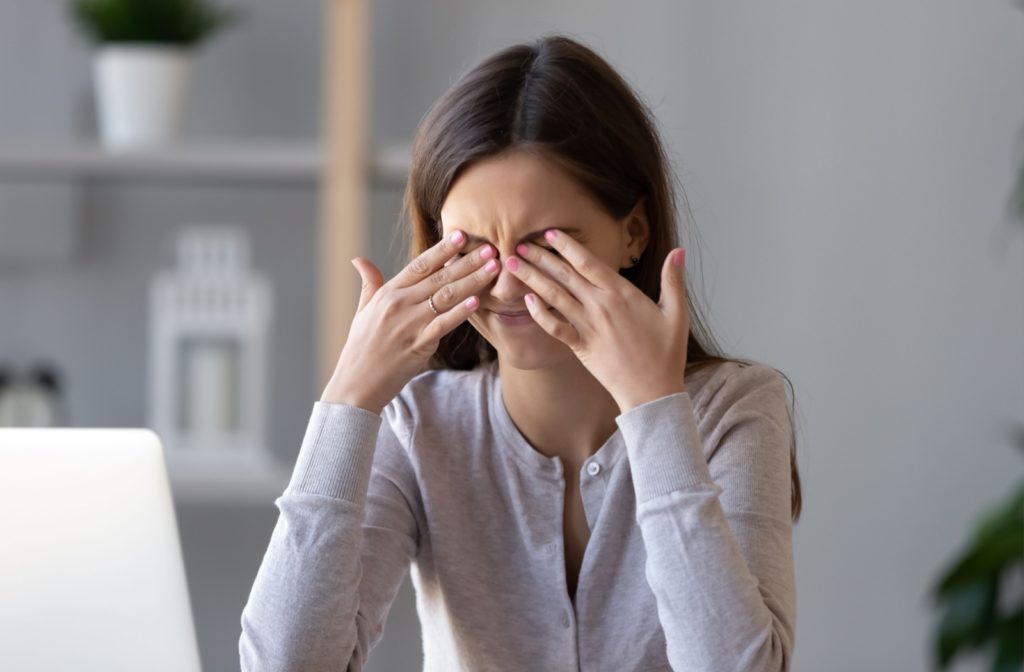Dry eye is a common condition that occurs when your tears can’t provide adequate lubrication for your eyes. It can be uncomfortable and lead to difficulty with everyday activities, such as reading. For many, it’s a minor inconvenience, yet for some, unaddressed dry eyes can lead to more severe complications and concerns about long-term vision health.
If left untreated, dry eyes can leave your corneas unprotected and open to damage, which, in severe cases, can cause blindness. Dry eyes are just a single factor behind potential vision impairment, but your optometrist has solutions and guidance to protect your eyes—and it all starts with an eye exam.
What Is Dry Eye?
Dry eye occurs when your eyes are unable to maintain a healthy layer of tears to coat the eyeball. This layer keeps your eye tissues nourished and clear, as it helps ward foreign bodies and infections away from your corneas, the clear front surface of your eye. However, this tear film requires a fragile balance to remain healthy.
There are 2 types of dry eyes people can experience:
- Aqueous deficiency dry eye: This occurs when the eyes simply don’t make enough tears to keep themselves hydrated.
- Evaporative dry eye: This is much more common, making up over 85% of dry eye cases, and occurs when the glands that form the tear film’s oily layer become blocked or inflamed. As a result, your tears evaporate too quickly.
Symptoms of Dry Eyes
The signs and symptoms of dry eyes can include:
- A stinging, burning, or scratchy sensation in your eyes
- Sensitivity to light
- A feeling of having something in your eyes
- Difficulty wearing contact lenses
- Mucus in or around your eyes
- Red eyes
- Watery eyes, because tears can be a protective response from your body to the lack of hydration
Common Causes of Dry Eyes
Dry eyes can affect anyone, and the symptoms can be occasional, mild, or chronic and life-changing. The root cause of the dryness determines the kind of dry eyes you experience. Factors that can lead to dry eyes include:
- Aging
- Hormonal changes, such as those associated with pregnancy & menopause
- Environmental factors, such as dust, smoke, and dry air
- Excessive computer use or screen time
- Certain medications, including antihistamines, decongestants, and hormone replacement therapy
- Overwearing contact lenses
- Some health problems, such as blepharitis (inflammation along the edge of the eyelids), thyroid disorders, and Parkinson’s disease
The Link Between Dry Eyes & Blindness
While dry eye itself doesn’t lead to blindness, chronic and severe cases left untreated can cause corneal ulcers and scarring. These are treatable but dangerous. In some rare circumstances, these eye injuries may lead to vision loss if left untreated for an extended period.
Scratching dry eyes can worsen the damage, which can, in turn, cause more dryness! Don’t get caught in an endless cycle of scratching your eyes. Even in the short term, cornea inflammation can hinder your quality of life, impacting emotional well-being and even professional performance due to the discomfort.
Treating Dry Eye
Relief from dry eye symptoms typically depends on their severity and what’s causing them. Some mild cases can even be solved with at-home methods.
At-Home Remedies & Lifestyle Changes
There are several methods to treat and manage dry eye syndrome at home, including:
- Over-the-counter artificial tears
- Humidifiers to increase moisture in the air
- Increasing omega-3 fatty acids in your diet
- Limiting digital time with screen breaks
- Protecting your eyes from wind and sun with sunglasses
Professional Dry Eye Treatments
Unfortunately, not every dry eye case can be solved on your own. Evaporative dry eye occurs when the oil-producing meibomian glands responsible for keeping your tear film stable become blocked. These blockages rarely fix themselves on their own, so your dry eyes could keep coming back.
Optometrists can address meibomian gland dysfunction (MGD) at the source—inflamed and clogged oil glands. IPL (Intense Pulsed Light) and RF (Radio Frequency) treatments are exciting therapeutic approaches we use to improve the quality of meibomian gland secretions.
IPL uses precise light pulses to melt away blockages, improving oil flow. RF therapy does the same but uses radio frequency energy targeting the eyelids. They also offer the benefit of stimulating collagen production, meaning they can reduce fine lines and wrinkles.
These non-invasive treatments can provide long-lasting relief for patients with chronic dry eye syndrome. By seeking treatment early for dry eyes, you can:
- Alleviate discomfort
- Avoid potential complications
- Maintain greater overall eye health

Discover Dry Eye Relief
Dry eye is more than a minor annoyance; if left untreated, it can lead to severe vision complications. Our team at Village Optical is ready to help you find relief. Regular eye exams are critical; they allow us to diagnose and develop a personalized treatment plan for your dry eyes.
With the effective treatments available today and a commitment to early intervention, the risk of blindness due to dry eyes is largely preventable. Don’t ignore the signs—take a proactive step and schedule a comprehensive eye exam today. Your eyes are worth protecting.



